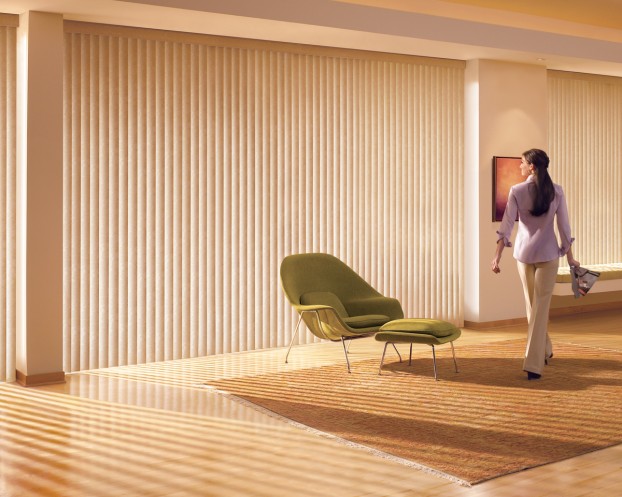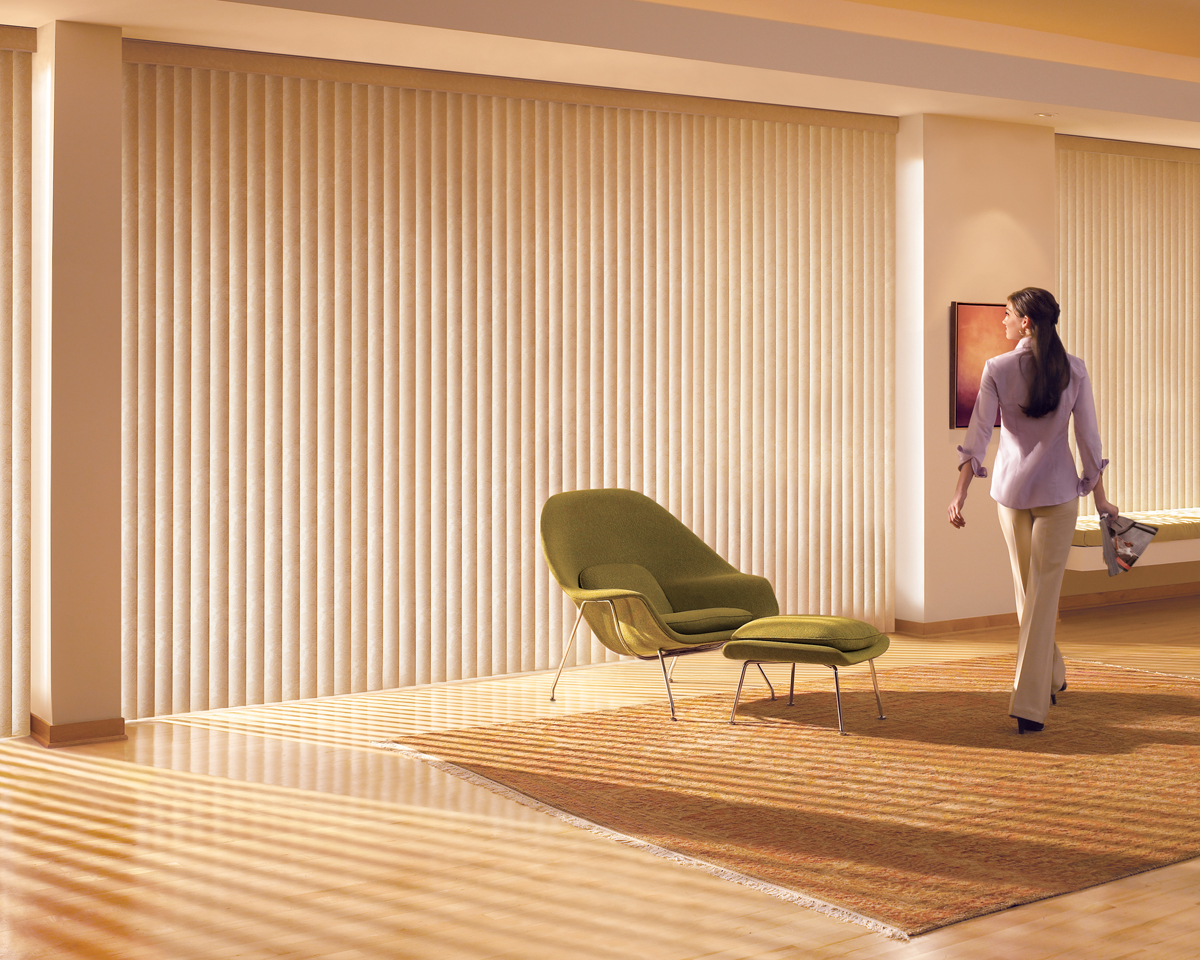Whether you are updating an entire room of your home or simply replacing your blinds, take time to consider your options and what will look best. Horizontal and vertical blinds are two common choices.
Both horizontal and vertical blinds have their own positive and negative attributes. The obvious differences between the two are reflected in the circumstances in which they are used, design features and style elements.

Design Features
Vertical blinds typically run on a track, allowing them to slide to one side or the other using a wand.
Horizontal blinds usually hang from valances, so that the slats can be collectively pulled up in a horizontal motion with the use of a cord. Nonetheless, vertical blinds tend to have wider slats, allowing in more airflow and sunlight whenever they are opened. According to Specialty Drapery, horizontal blinds provide a greater sense of security than vertical blinds because horizontal slats have a tighter, narrower closure.
Usage
Although vertical and horizontal blinds are both used for large windows, only vertical blinds are used for sliding patio doors and other similar doors because these blinds are able to slide sideways to allow for access around them.
Vertical blinds are also used for wider, more expansive windows to add a sense of height to a room, while horizontal blinds are typically used in standard-sized windows. However, both horizontal and vertical blinds are versatile and a homeowner’s personal design preferences play a big part.
Style Elements
Both horizontal and vertical blinds have visually attractive features; however, they can portray different styles when incorporated into different settings and paired with certain household elements.
Vertical blinds are more commonly used in office or business settings due to their contemporary style. Since horizontal blinds are often paired with valances and draperies, these blinds possess a more conventional style and are usually found in residential settings, according to Your Nature’s Home.
Beyond style, window treatments can actually be important in certain circumstances.
In bright environments, blinds filter sunlight and provide privacy. They are understated design features that can add aesthetic appeal to windows and a room’s overall appearance. Blinds help a room, making it cohesive and complete.
Although design features, usages, and style elements for horizontal and vertical blinds are different, both types of blinds are versatile and serve similar purposes in residential and commercial settings. Now it’s up to you to decide which kind of blind complements your setting best.

